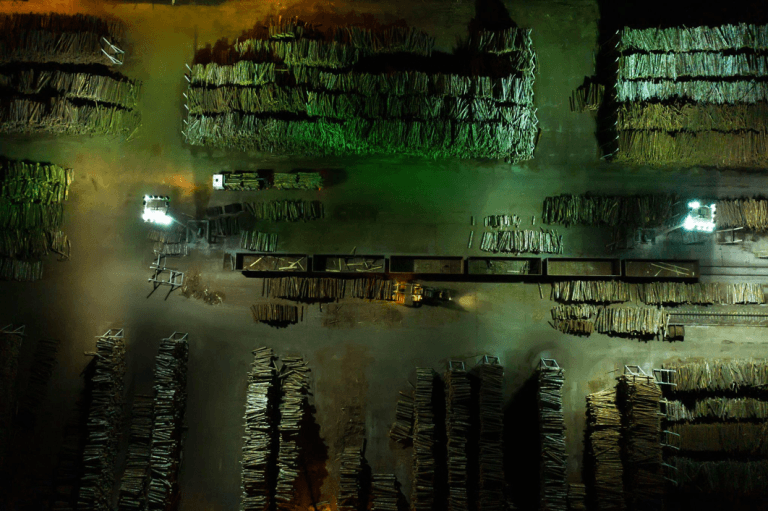Link(s) :


03.02.2023
Forest owners, wood processors, exporters and buyers are under increasing pressure to demonstrate traceability back to source. What is driving this and how can technology help? iov42 created Timber Chain (a digital traceability system) to help with just this. In this article, they suggest what to look for when considering how technologies can protect an organisation’s sensitive data rather than expose it whilst meeting due diligence requirements.

What is driving the increased demand for traceability?
Some believe at a macro level that by reducing illegal logging:
New regulations such as EU Deforestation Regulation (EUDR) and the UK Environment Act have due diligence at the centre and are being introduced to achieve the above objectives.
However, there are fears that this could cause extra work and unintended consequences for deforestation whereby wood products may be switched to less regulated import markets.
Whether iov42 think EUDR is fit for purpose or not, it looks as though increased traceability is here to stay and demand will only increase.
Whether you are a tropical forest owner, exporter or manage a sawmill, being able to provide traceability can become a competitive advantage and help with access to markets. Making due diligence easier for buyers is an added service, which they may be prepared to offer better terms for. The same holds for financial institutions who use traceability as a way to assess risk within the supply chains they fund. Finally, as Timber Chain user Carl Ronnow explains, “implementing the traceability system has helped with data quality and structure, freeing up time and improving internal processes”.
What to look for with ‘new’ traceability technologies
Technologies that work with existing systems and which are co-designed will be the ones that provide benefits to the industry. This is the approach that Timber Chain has taken. Integration with existing traceability efforts is the goal (rather than replacing systems that organisations are using to good effect). It was designed with input from timber industry experts such as Preferred by Nature (formerly NEPCON) and Carl Ronnow, making it fit for purpose.
iov42 know that ATIBT members already have traceability systems in place and embrace useful technologies. To bring to life how Timber Chain can deliver additional value, let’s explore a practical example:
Where wood does not go directly from a forest-based sawmill / veneer plant to Europe, but instead is processed or handled in special economic zones or other countries, there is the chance of mixing of certified and non-certified wood. This is challenging for importers who need reassurances about certification and origin claims.
Because Timber Chain can give ‘identities’ to logs from the start of the chain, these trustable identities are attached in digital format and follow the wood as it is mixed or processed. This allows the source information to continue being provided and linked from one step of the chain to the next.
As hinted at above, Timber Chain is a traceability system that maps out supply chains and credibly links i) log identities; ii) volumes of wood throughout the chain, even when processing takes place in multiple steps in different countries. Data (such as due diligence documents and other traceability related matters) is managed on a platform that uses the strengths of ‘Distributed Ledger Technology’ (of which blockchain is a version). DLT demonstrates high levels of trust through security (via encryption technologies) and immutability (tamperproof), such that there is a historical record of all data and whether any changes are made or documentation used twice.
There are many stories of technologies developed without empathy for the end users. They can be costly, disruptive and with limited real world benefit. In the timber industry specifically, there are concerns that technology might make things too transparent. There are understandable concerns that i): commercially sensitive data may be shared; ii) information will be publicly available.
This is where ‘decentralised’ blockchain systems like Timber Chain which give back control to users, rather than having one single point of failure, can significantly benefit complex supply chains. Rather than open, public blockchain (or other) systems, iov42’s Timber Chain builds trust by being a ‘permissioned’ system, where users decide who can see what level of information. Indeed, incoming regulations will require transparency about geo-location and supply chain sources. This will mean sharing information with downstream customers and their customers. Using traditional contract mechanisms can overcome worries about disintermediation and, with a permissioned approach, users have visibility about who can see what.
Conclusion
The timber world is changing rapidly to meet increased demands for transparency. Those who get ahead of regulation and explore which systems and technologies can work for them will likely find the burden diminished once EUDR is fully implemented and when other regions follow suit. Solutions like Timber Chain, inspired by cutting edge ‘Distributed Ledger Technology (DLT)’ have been designed with empathy for the nuances and challenges facing the timber industry, placing users in control and giving them peace of mind that disruption to existing business operations will be minimised.
Check out iov42’s recent report here where it speak to Timber Importers across Europe to understand their understanding of incoming regulations and attitudes towards traceability solutions.
About Timber Chain
Whatever your role in the supply network, Timber Chain optimises your capacity for due-diligence, information sharing, verification and auditing, enabling maximum efficiency and providing peace of mind. Clients tell us ‘with shipments on Timber Chain, compliance is ‘just done’’. Everyone from importers and exporters to forest managers, harvesters and retailers of wood products can implement a dynamic, ultra-secure system that reduces the risk of human error and corruption.
Any reputable organisation, once permissioned by network participants, can use Timber Chain. This positions Timber Chain as a reputable provider of trust between all participants in the network, both direct and indirect.
For more information, feedback or questions please email: timberchain@iov42.com
Link(s) :